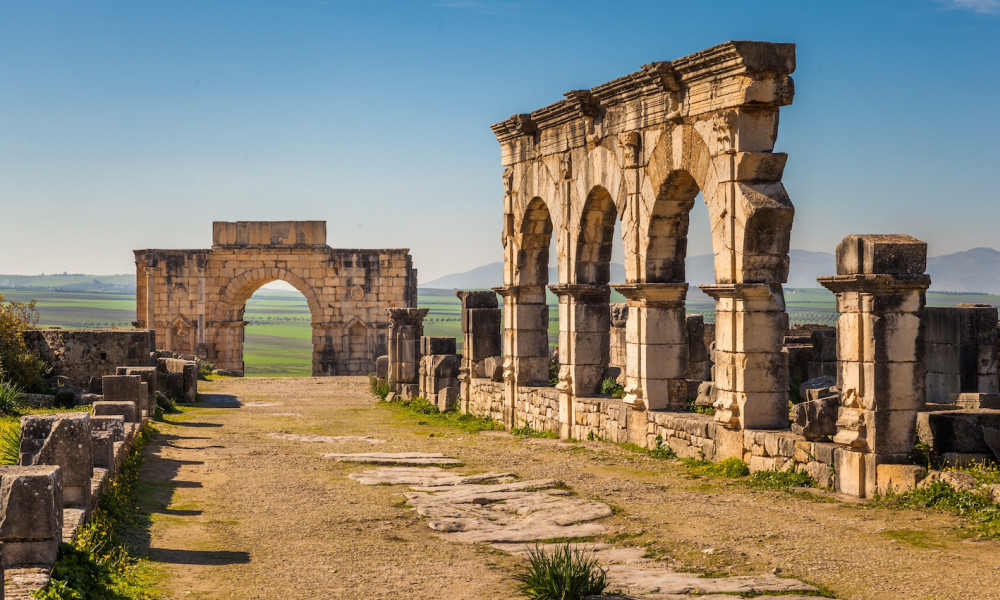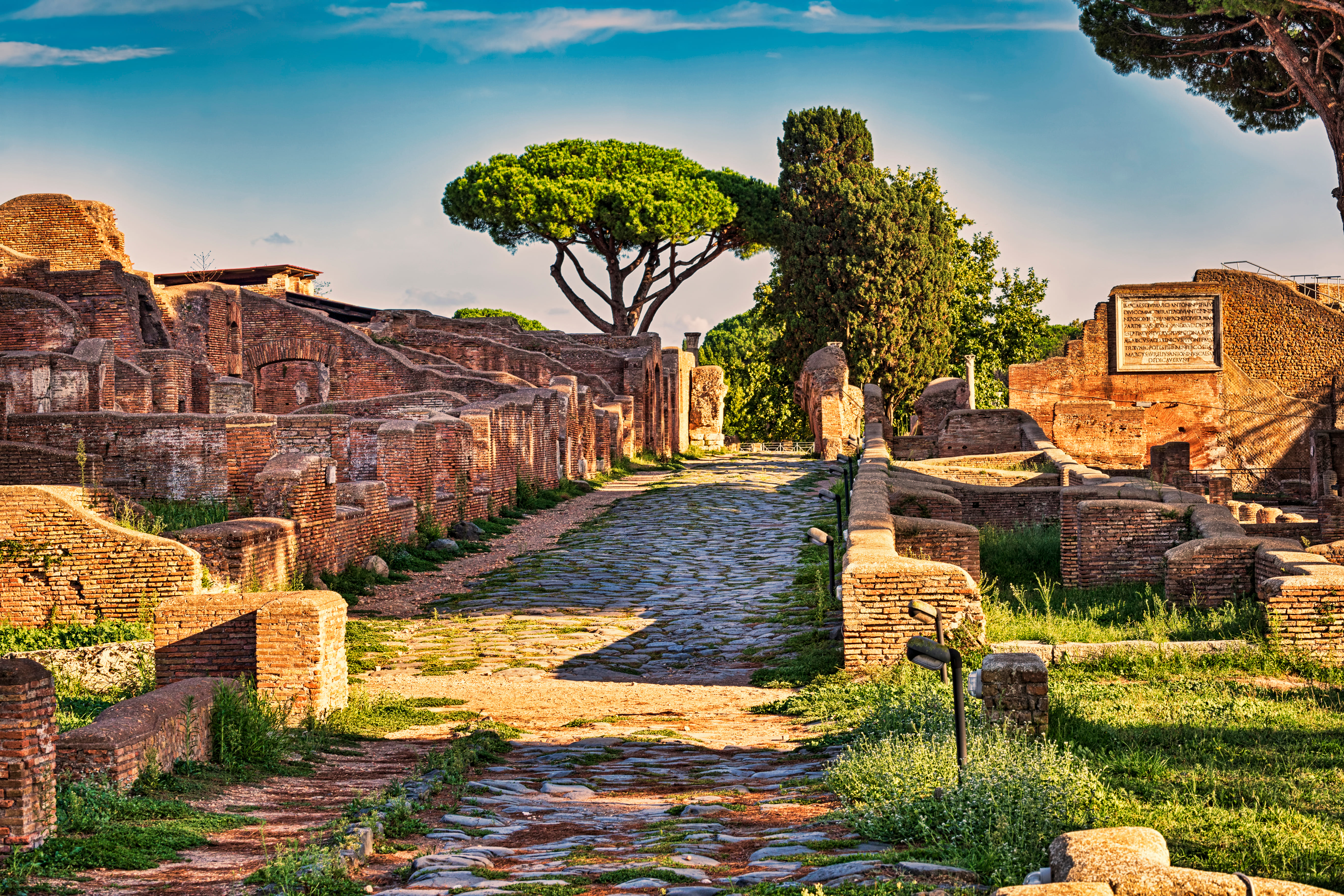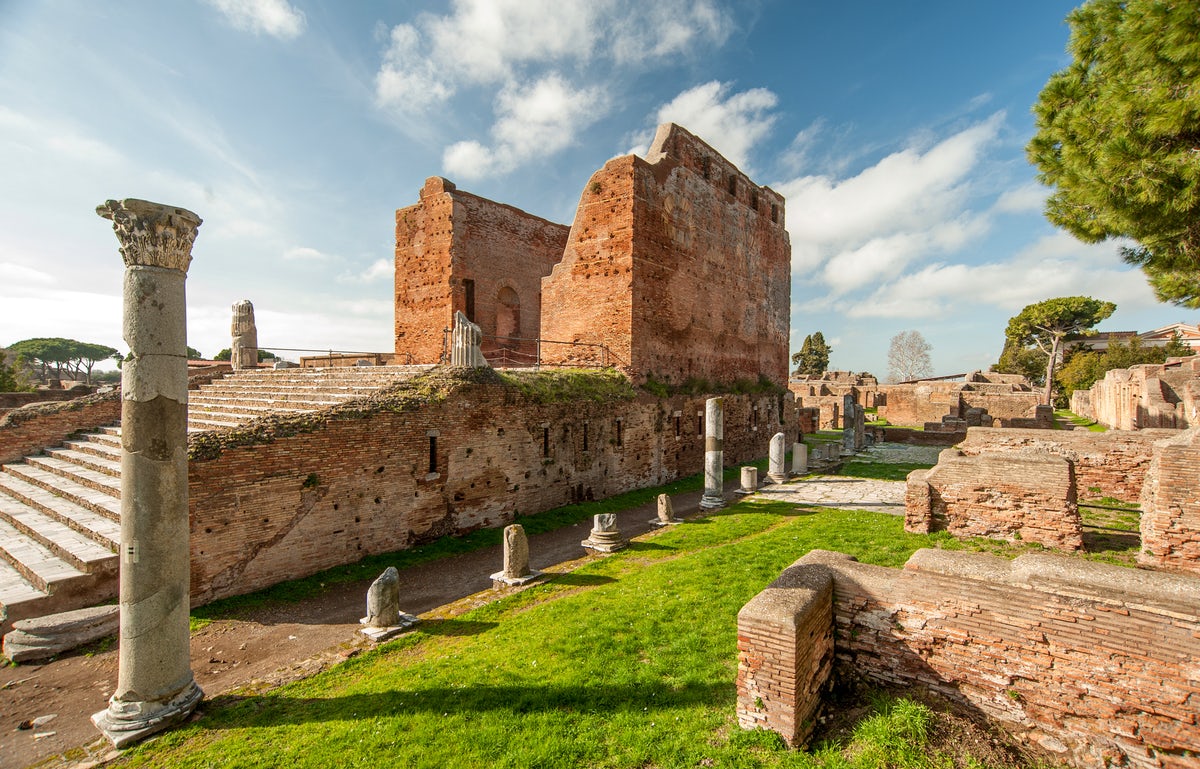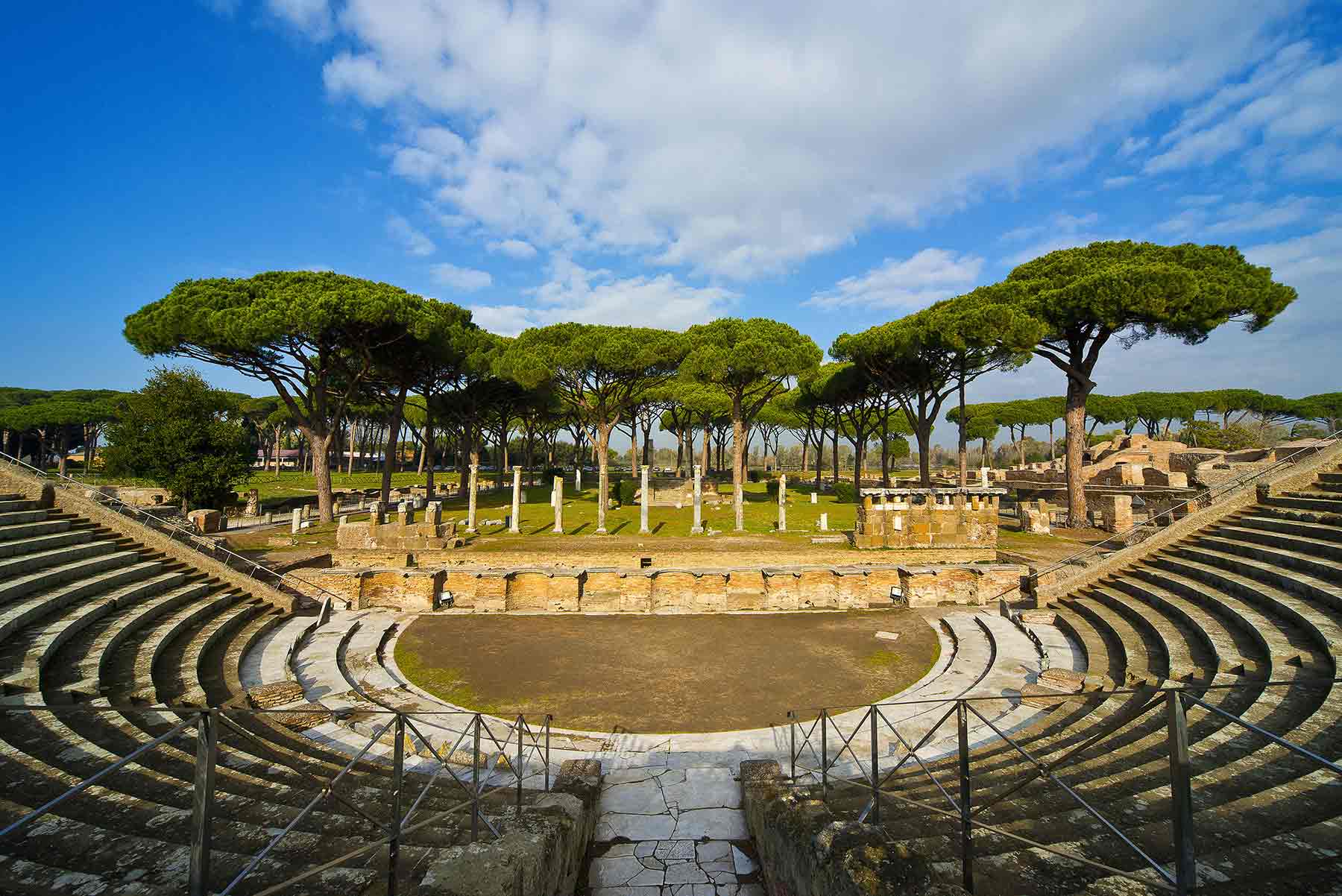Beaches and antiquity in Roman suburbs Ostia

...which is famous for its golden beaches, ancient ruins and oldest, richly decorated baths.
The modern Ostia is represented by two neighboring cities, such as Ostia-Antica and Lido di Ostia. The first is the ancient colony of the Roman Empire, full of ancient sights and ruins, and the second is a modern resort on the coast of the Tyrrhenian Sea with pristine sandy beaches and dozens of authentic bars and trattorias for any tastes. Ostia Antica, located at the mouth of the Tiber, was the main harbor of the Ancient Rome and in fact its first colony. Ship sailed from all corners of the empire, providing the capital with unprecedented delicacies. The city was strategically important - first, because it fed the whole of Rome, and secondly, thanks to it, Roman generals could control the entire western coast, so Ostia, using her position, quickly became rich and prosperous. Gradually, the Roman aristocracy moved here, erecting luxurious villas and mansions on the coast, many of which have survived to this day. Photo selfguide.ru
Photo selfguide.ru
If you believe the ancient historians, Ostia was founded in the 7th century BC by the king Ancus Markius to prevent the penetration of enemies into Rome through the Tiber. However, the oldest excavations found in Ostia and its environs date from "only" IV century BC. According to one version, this discrepancy comes from the fact that Ostia was originally only a military camp and did not have large-scale structures. Another version says that the ancient Ostia, referred to in the documents, was located elsewhere and had not yet been discovered by archaeologists. Nyway, the seventh as well as the fourth century BC today allows us to consider Ostia almost the same age as the Eternal City. So, alikeRome, it is full of ancient sights.
See also: Everone soon or late comes to Rome
You can get to Antica by commuter train for just a couple of euro from the center of the capital, spending a little more than half an hour on the road. The entrance to the city can be seen at once - these are the great ancient gates, built by Cicero and Pulcher, which date back to the I century BC. Right behind them begins the main artery of Ostia-Antica - DecumanusMaximus, lined with blocks of basalt. On both sides of it narrow streets run up that hide a lot of sights: ancient taverns and hotels, temples, shopping bazaars, plots lined with marble and mosaic, public toilet and even a necropolis.
The most notable terms are on the right of Decumanus Maximus. They have got the name of Neptune and were built by the order of Andrian and Antonius Pius in the II century BC. On their walls there are well preserved mosaics depicting the wedding of Neptune and his wife Amphitrite, as well as Neptune with Nereids and Tritons. Not far from them there is an amphitheater for 4000 spectators, built under Augustus. Surprisingly, it performs its function to this day - in the summer there are open-air performances and city holidays. Indeed, today, it can include not four thousand spectators, but two seven hundred, but the structure is still impressive. Directly in front of the theater is a Christian church, built in memory of the murdered Christians in the second half of the 3rd century. Photo askostours.com
Photo askostours.com
In Ostia Antica, many temples have been built in honor of the ancient gods, but the largest is on the main square and is called the Capitol. It was built by the order of Emperor Andrian in honor of Jupiter, Juno and Minerva. Immediately you can see one more terma - also the largest in the city. They are called Termo del Foro. However, the most interesting are the houses, warehouses and barns of Ostia. They talk about the life of the ancient townspeople much more than public, though more pompous, places. For example, the richest Ostians lived in five-story brick houses with mosaic floors. At that time residential buildings of unprecedented height were considered to be real skyscrapers. But there were also simpler houses as they simultaneously were built the living quarters, warehouses and bureaus. It is noteworthy that the most important warehouses in Ostia were built not in the outskirts of the city, but in the center, which indicates their state importance. There, wine, grain and other products were stored for future transportation to Rome. One of these warehouses is well preserved. This small three-story building called Horrea Epagathianaet Epaphroditiana dates from 145-150 AD and was used mainly for rare expensive goods. In the courtyard even floor mosaics have been preserved. Photo itinari.com
Photo itinari.com
Just behind Antique there is quite another Ostia - modern, relaxed, smelling of salt water and hot sand. This Lido di Ostia is a cozy resort town "for your own", where you can hardly find tourists, there are no English menus in local taverns, and only Italian speech is heard on the beaches. Knowingly the Romans call this city Lido di Roma - a quiet harbor for the inhabitants of the tourist megalopolis. Unlike the ancient neighbor, Lido di Ostia was founded only in 1884. At first, only peasants lived here, but exactly 40 years later, with the advent of the railway, the city became a real resort, in unprecedented demand among the Romans. It is not surprising, given the kilometers of sandy beach with a gentle entrance to the water, relatively close to the seething capital. Most of the beaches are paid - about 13-16 euro per person. This price includes a deckchair, umbrella and use of the toilet, but there are also public. People there are much more, but you can spread your towel and use for free what nature gives. A hundred meters from the sea - dozens of different restaurants of Italian cuisine, where you can eat fresh and relatively inexpensive seafood. Photo romaadhoc.it
Photo romaadhoc.it
Lido di Ostia does not swarm with tourist attractions, but it's worth a visit if you want to relax from the pandemoniums of tourists and the hot stone streets of Rome, take a dip in the refreshing waves of the Tyrrhenian Sea, stroll along the waterfront, see the sand dunes and the Rybakov area with impressively cozy rustic houses. This saving oasis nearby at the Eternal City is a wonderful opportunity for one day to disperse, see and taste the real Italian life "in the outback", and in the evening to return and further win over Rome.
Cover photo sedessapientiae.it





















